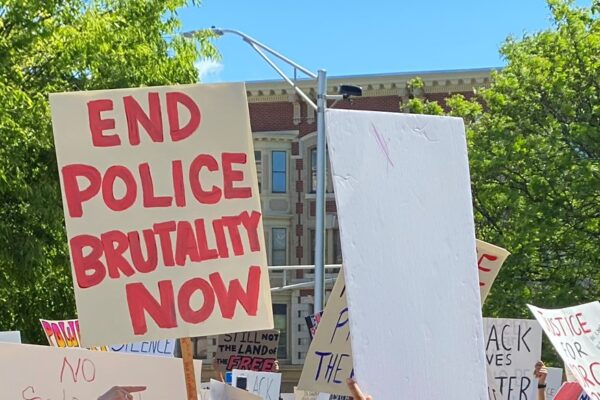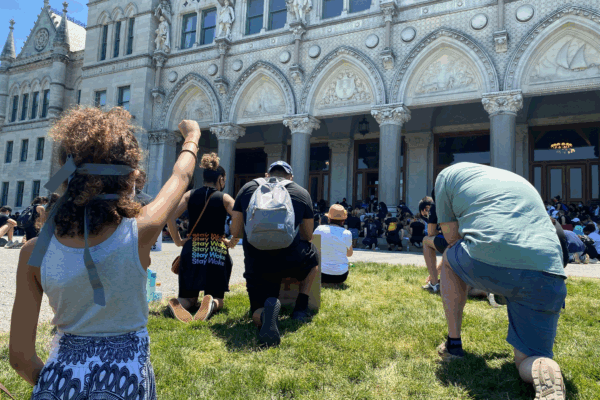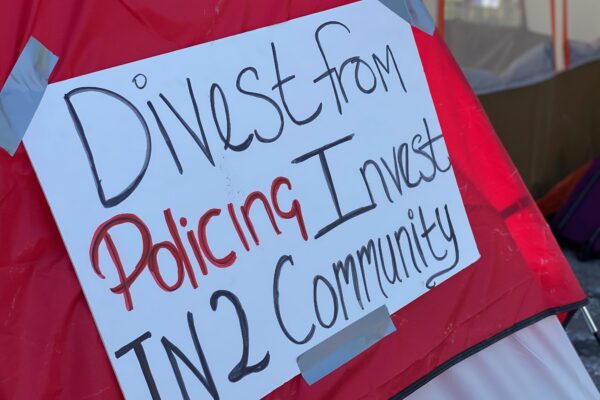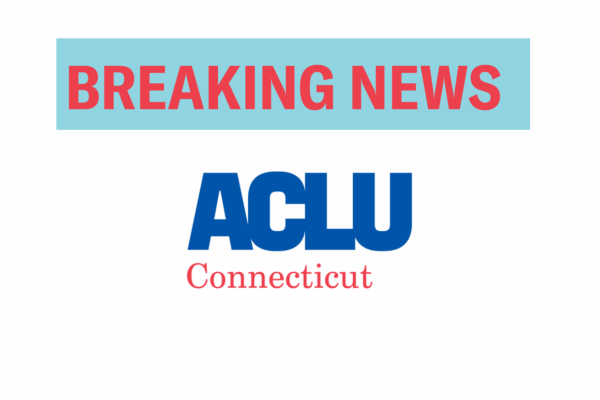This summer, Connecticut passed a new police accountability law (Public Act 20-1). The bill contains a range of policies, each of which is just one piece toward ending police violence. Included in Public Act 20-1 is a section allowing municipalities’ legislative bodies to grant subpoena power to civilian review boards (CRBs).
The conversation around CRBs in Connecticut is decades-old, but activists are showing renewed interest right now in creating CRBs in their towns. If you’re thinking about creating or changing a CRB in your town or city, there are some important things to know about how they’ve been used – and stymied – in the past, and how they are likely to be thwarted in the future. Knowing what to watch out for is important for understanding what tools a modern CRB in Connecticut needs to be effective and how local communities can ensure a CRB is granted those tools.
First, some history. Beginning in the late nineteenth century, politicians began creating police commissions in an attempt to create oversight of police. These police commissions largely failed to make policing better, due in part to their deference to police. In Connecticut, police commissions, while not mandatory, remain common. As one local police commission states, police commissions usually function as the “Board of Directors” for the police department, meaning they typically (although not always) work alongside police departments rather than as checks on abuses of police power. Police commissions could be oversight tools, especially in places where commissioners are directly elected, but few Connecticut police commissions have used their role in that way yet.
CRBs were in part borne out of the ineffectiveness of existing police commission structures. After police commissions failed to improve policing, reformers began to propose community oversight boards in the 1920s, with the first such board established in 1948.
These early review boards were under-resourced and were ultimately dissolved because of their inability to overcome dogged resistance from police. Beginning around the 1960s, increased visibility around police mistreatment of Black people led activists to renew the call for community oversight through CRBs with real investigative powers. By the end of the 1990s, more than 75 percent of the nation’s largest cities (and more than 80 cities across the country) had civilian review systems, and they remain common today.
Common problems
Despite their ubiquity, CRBs are often seen as ineffective. This is not because CRBs are inherently valueless, but because police and politicians have often purposefully erected barriers to stop CRBs from carrying out meaningful oversight. Impediments include:
- police department and unions defying, obstructing, or undermining CRBs
- politicians creating CRBs that are not independent from police
- police and police unions imposing restrictions on what information CRBs can release
- past or present police employees staffing CRBs
- politicians compromising rather than sufficiently empowering CRBs
- municipalities inadequately funding CRBs so they cannot perform the full range of oversight necessary
- municipalities inadequately funding and supporting CRBs so that members are perceived as lacking professionalism or expertise
- municipalities not bestowing CRBs with necessary investigatory powers, such as subpoena power
These and other barriers to effective external oversight of policing are often the result of advocacy from policing’s political machine, including police unions. In 1966, in response to an attempt to expand civilian membership on New York City’s Civilian Complaint Review Board, the police union mounted a five-thousand-member picket line in protest. Union efforts to block community oversight continue to this day, with a suit against a CRB in New Jersey being litigated right now. In Connecticut, police unions from across the state opposed PA 20-1, which included the CRB subpoena measure.
As we are in the midst of another public reckoning with violent and ineffective policing, calls for ending policing as it exists today, from accountability to abolition, have once again taken center stage. Protesters have called for a wide range of solutions, including, once again, for effective CRBs that prioritize community health and safety, not policing.
Thanks in part to PA 20-1, CRBs in Connecticut may be more able to avoid the common obstacle of lack of subpoena power, and there are other things that CRBs must have if they are to be effective tools for the people.
Investigative powers, including subpoena powers
The first major thing that CRBs must be structured to include is investigative powers, including subpoena power. Subpoena power allows a CRB to compel witnesses to testify and produce documents in the course of investigations – an important tool to combat police obstruction of CRB investigations into public complaints, police misconduct, or other policing issues.
Under the new police accountability law passed this summer, the legislative body for every town in Connecticut (things like city councils, boards of alders, boards of selectmen) has the authority to grant subpoena power to a municipal civilian review board. So, if your town has a CRB that does not currently have subpoena power, or if your town is thinking of creating a CRB, your town councilors, alders, selectboard members have the power to make sure your CRB has subpoena capabilities. If your town’s CRB already has subpoena power (like New Haven’s), that remains unchanged. This is something activists in New Haven laid the groundwork for in their years-long fight to instill their city’s CRB with subpoena power, and it is one critical part of making CRBs work for the people, not policing.
The subpoena power specifically authorized in PA 20-1 is an irreplaceable tool for conducting meaningful oversight. Without subpoena power, CRBs can be stonewalled and denied access to critical documents. But with subpoena power, CRBs have a better chance of getting to the truth so that improper police actions can be sniffed out and redressed.
Implicit in Section 17 of PA 20-1 is an authorization for CRBs to conduct investigations (a CRB wouldn’t need subpoena power if it wasn’t conducting investigations into policing issues). This power to conduct investigations in the first place is also critical for CRBs, which otherwise run the risk of being unable to learn more about allegations of police misconduct.
Scope of investigations
Police actions that harm communities can range from discourtesy to killing a person. Some CRBs have been tasked to only investigate serious police violence, but this approach is a mistake. Differences in harm and wrongfulness should be reflected in different consequences, not in ignoring certain classes of misconduct altogether. In addition, “mere” discourtesy or offensive language is not necessarily minor misconduct.
Research has shown that officers with complaints for verbal discourtesy have higher levels of coercion – police threats of physical harm or acts of physical violence -- in encounters with people . In other words, police discourtesy is linked to later police violence, and can act as an early predictor and warning of later police violence. By enabling a CRB to oversee lower-level complaints, a community may very well be preventing later serious acts of police violence. This adds up to strong incentives for communities to create CRBs with the power to investigate not only serious police abuses of power but also the daily violations that add up to systemic wrongs.
Transparency
Another critical component for CRB effectiveness is transparency. CRBs must be able to share information about police behavior with the public. PA 20-1 does not address this. As our investigation into police contracts makes clear, police union contracts in Connecticut can prevent a municipality or its CRB from disclosing police misconduct. That may not something a town can change immediately – but it something the town can change easily, by removing those provisions the next time the contract is up for negotiation.
One way to ensure that future police union contracts do not include such cover up provisions is to endow a CRB with the opportunity to review proposed police union contracts and to provide information and feedback on these contracts to the town legislative body before they are adopted.
Independence
The role of a CRB must be holding policing accountable to the people, especially people most harmed by the outsized role, responsibilities, and tactics of policing as it currently exists. CRBs therefore have a conflict of interest if they are hampered by too-close relationships with police, sometimes due to police holding positions on a CRB.
Thus, it is critical for CRBs to be comprised of people with a stake in meaningful police accountability and ending police violence. Each community’s needs will be different, and people in municipalities typically know who is committed to ending police violence and racism in policing. Decisions about who serves on a civilian review board should be made by the community and its legislative body, not those with conflicts of interest like the police chief or executive branch members who select police chiefs.
Regardless of how a community decides to select its civilian review board members, it should be just that – a civilian review board, made up of people from the community who live with the effects of policing decisions, not current, former, or future members of the police department. This prevents police interests from putting their thumb on the scale when complaints are considered and gives communities a better chance at democratic control over policing that can lead to real accountability.
Meaningful disciplinary power
Too often, CRBs play too advisory a role. While many Connecticut towns are structured so that legislative bodies or their agencies (like CRBs) cannot oversee executive agencies like the police department, there are still ways to ensure CRBs are not “paper tigers” – left without the ability to do anything about any misconduct they uncover.
Strategies to give CRBs power include agreed-upon discipline guidelines, negotiated and set forth in advance. These would require the ultimate disciplinary authority for police in town (typically the police chief) to apply those disciplinary guidelines in every case when the CRB finds misconduct. Or they can take the form of having public hearings in which the police chief must answer to the board and, more importantly, the people, if they deviate from CRB discipline recommendations. A number of possible solutions exist, but the first step for a town looking to establish a strong CRB is to identify this potential roadblock often created by police, and work to avoid it.
Budget
Finally, perhaps the most important single ingredient is entirely up to local politicians: the budget of a CRB. Underfunding leads to too few investigations, too little oversight, and too much deference to police.
There are different options for ensuring a CRB has enough funding to fulfill its mission of police accountability. One is indexing CRB funding to police budgets, to guarantee that CRB funding is always proportionate to the police department. Some have proposed municipalities guarantee funding at a level equivalent to 5-10% of a police department’s budget, which, to its detriment, does not reduce funding for policing but does ensure funding for a CRB. Another indexing option is to require that the police department’s budget never exceed a certain percentage of the CRB’s budget. And a third option is to divest a specific percentage of a police department’s budget and reinvest that money explicitly in to the CRB. Towns should mandate annual or biennial reviews to ensure the CRB is properly funded according to the volume of complaints it is receiving.
Regardless of how a town ensures resources for its CRB, a separate budget that is not controlled by the police department provides the kind of secure funding a CRB needs to employ staff, train volunteers, have the capacity to receive and review all citizen complaints, and have resources to provide big-picture review and feedback on policing practices and policies in the municipality.
Reimagining CRBs
If a town creates a CRB using the tools contained in PA 20-1 and with the intent to avoid barriers that have historically limited their effectiveness, real change can happen. At a time when many people are demanding a complete rethink of policing, it is also possible to reimagine the role of CRBs.
If correctly empowered, CRBs can look not only at individual instances of police misconduct, but at local policing patterns and practices with a wide lens, and make changes. For example, communities that are often the targets of police violence are also frequently underserved by the police with longer response times, more open cases, and less safety. A CRB focused on accountability could investigate those patterns and propose policies to reallocate police responsibilities to other, non-policing service providers, or to remove areas of police responsibility.
Using new tools and better structuring to avoid past problems with effectiveness is important for making CRBs better at the police accountability they’re intended to address. Just as important is reconsidering the scope of CRB work to make inroads into divesting from policing and investing into things that make our towns and cities safe and healthy, like education, healthcare, jobs, housing, and food security.





